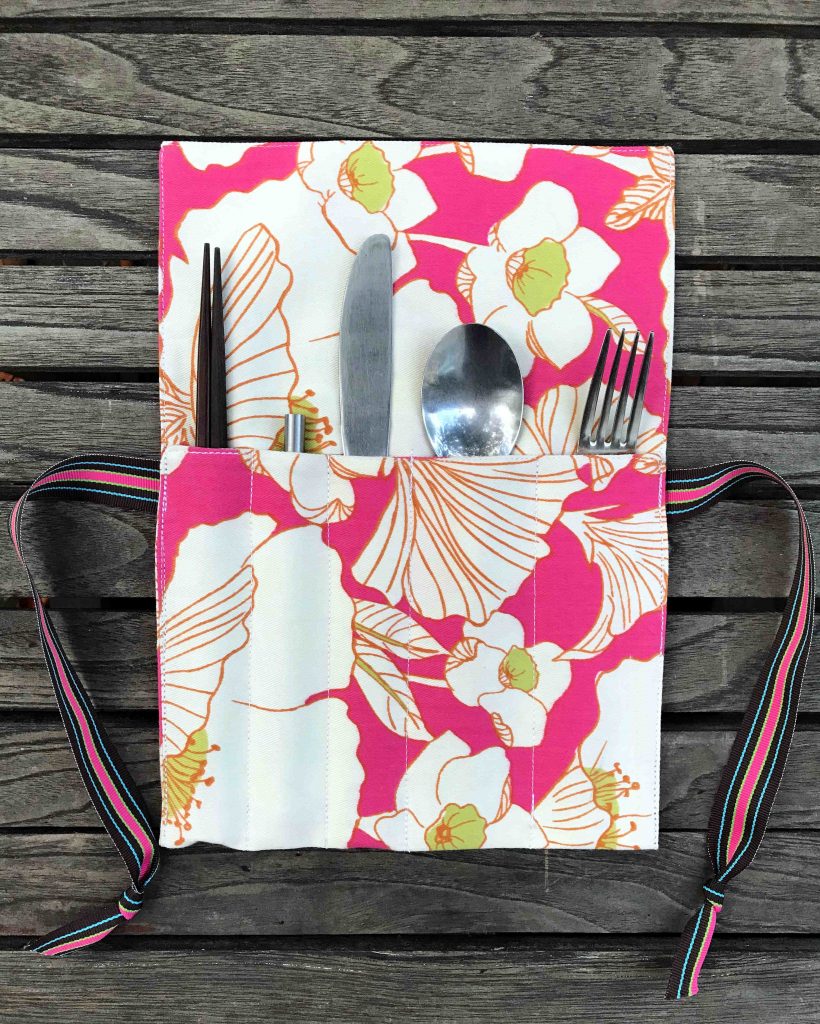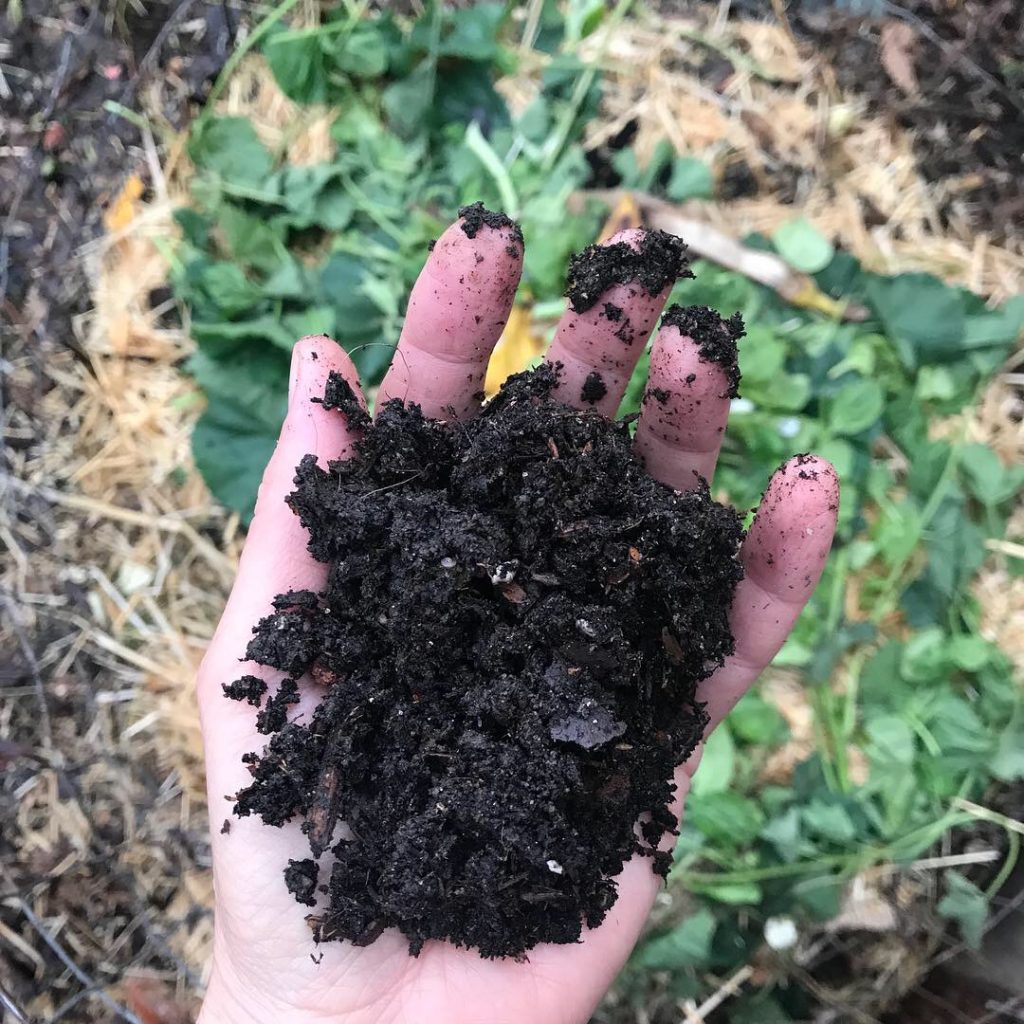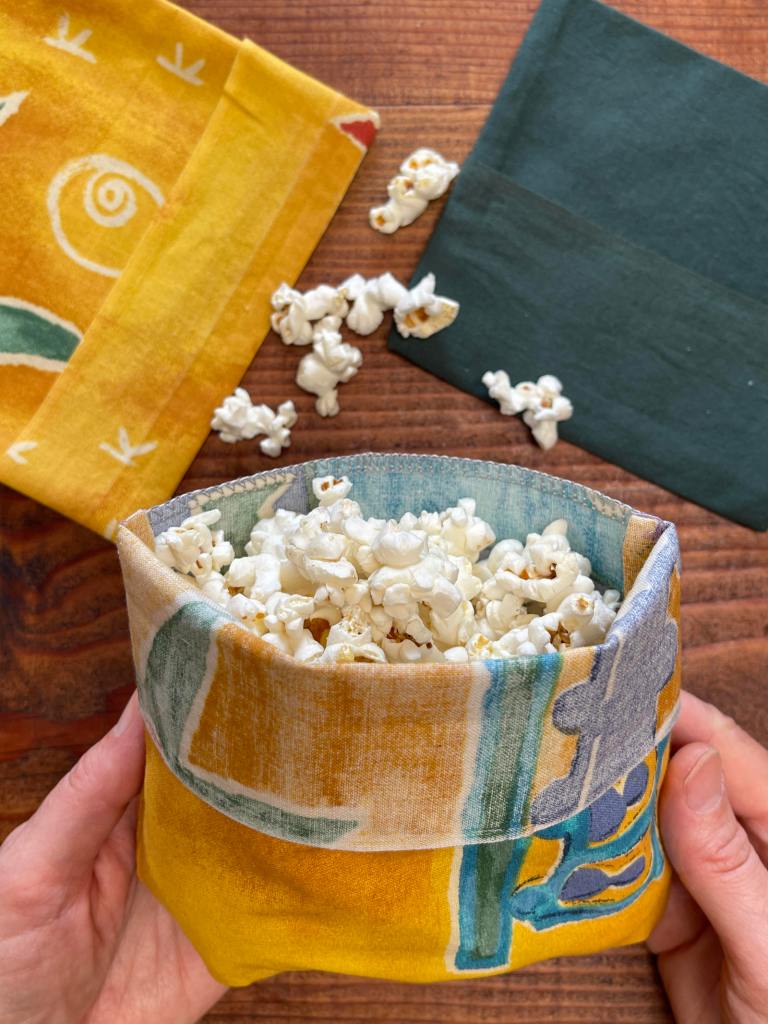What to Pack in a Free, Zero-Waste, Out-and-About Kit
Packing these everyday, reusable items in an economical, on-the go, zero-waste kit will help you avoid tossing single-use items every day. The post What to Pack in a Free, Zero-Waste, Out-and-About Kit appeared first on Zero-Waste Chef.

You won’t need to spend money to pack an on-the-go, zero-waste kit if you own a bit of basic gear (like knives and forks) and can sew a straight line. If you do have to buy a fork, you needed to do that anyway so “free” still applies. And if you can’t sew but would like to learn, perhaps you can do so for free. Many libraries now make banks of sewing machines available either at certain times or during classes. Bring an old sheet and worn pair of jeans and you’re all set.
Water bottle (or jar)
An expensive thermal water bottle is nice to have but a jar also works. In Las Vegas a few years ago for my niece’s wedding, one afternoon, after completing the marathon walk to the hotel lobby from my room, I realized I had forgotten my water bottle. Luckily I did have a mason jar in my bag. I ordered water at the bar in that and preferred drinking out of it so much over my water bottle that I used it for the rest of the trip.
Unlike a fancy water bottle, if I accidentally lose a jar, I’m not out any money. I don’t buy jars. People give them to me or I reuse any I buy food in (like peanut butter…it comes in the best jars…).
Utensils
With a knife, spoon, fork and chopsticks on hand, you’ll avoid the throwaway plastic utensils that some restaurants and cafés provide. (Pack a straw as well if you like.) Even if you see the word “compostable” stamped all over a utensil handle, that means “compostable where facilities exist” which they don’t (for the most part). And who can keep all of this straight? Stick with reusables and you won’t waste time googling articles and studies on compostable plastics, your city’s waste management policies and capabilities and the health problems linked with ingesting microplastics. Besides, wouldn’t you rather eat with a real fork?
If you like, sew yourself an optional but cute utensil roll to store your cutlery in. Go here for the sewing instructions. Or simply wrap your utensils in a clean napkin.


Unpaper towels
Every time I post a picture online of myself drying my hands with a reusable towel in a public bathroom, people tell me that in Japan, people carry hand towels with them everywhere.
Some paper towels come from virgin trees. Some don’t. Both waste resources. If you carry a towel around with you, again, you won’t have to waste time researching the provenance of the paper towels provided in whichever bathroom you find yourself.
I cut a set of unpaper towels out of a flannel sheet (which I bought second hand and my daughter wore out) and finished the edges with my serger. A zig-zag stitch on a standard machine would also work. (Go here for more instructions.) Again, you don’t have to make these yourself. Grab a thin towel from your linen stash and tuck it into your bag. When it’s dirty, replace it with a clean one.
Handkerchiefs and napkins
I make smaller versions of unpaper towels for napkins or handkerchiefs. The napkins go on the kitchen linens shelf and the handkerchiefs in a jar to keep them separate. Also, the fabric types distinguish them from one another: poplin-type cotton for napkins and flannel (or sometimes cotton jersey) for handkerchiefs.
Initially, my family found the idea of reusable handkerchiefs, well, gross. I imagine consumers thought the same thing when marketers first pushed their throwaway, abrasive, nose-reddening tissues made from trees. Now, everyone in my family loves fabric handkerchiefs. They feel so much better on our noses than paper and cost nothing. Simply toss them in the laundry when needed—they take up little space. For the last batch I “made,” I simply cut up a soft, worn, cotton jersey t-shirt. The unfinished edges don’t fray.
Produce bags
Always be prepared! You may come across a fruit tree listed on the Falling Fruit map, ripe for the picking. A produce bag or two on hand will enable you to carry home your bounty.
At the end of an event I spoke at recently, a large bowl of toasted bread slices sat on a cart, about to be rolled away by the cleanup crew and disposed of. Luckily, I had a roomy and clean produce bag in my bag and so I stuffed it with a bunch of the bread. At home, I quickly turned the bread into breadcrumbs in my blender.


Produce bags also come in handy for:
- Filling with certain bulk foods. These lightweight cloth bags work well for larger items, such as nuts, beans, rice and popcorn.
- Freezing and storing bread. I store whole, unsliced loaves of sourdough in these bags in the freezer. I don’t freeze bread for very long—a couple of weeks maximum. I store bread on the counter in these bags also. (Go here for more on storing bread.)
- Buying bread and baked goods. The bakeries at our farmers’ markets are happy to put their goodies into these clean bags.
- Packing lunches. The smaller bags work well for a sandwich (unless it has lots of juicy pickles) or snacks.
- Spinning greens (almost) dry. Wash greens, place them in a bag, take the bag outside and twirl it around a bunch of times to dry the greens off. Store in the crisper in the damp bag where they will stay fresh longer.
- Buying produce. I usually take at least 10 with me to the farmers’ market every week. At home, I put the bags of vegetables directly in the crisper or pantry, depending on the type. Most of the fruit goes in our fruit bowl. (Go here for storing produce A to Z.)
Snack bags
These fun-to-make snack bags, like the other sewing projects I’ve included on this list, make a dent in your scrap pile. Pack dry little somethings in them to take on the go or bring a treat home from your favorite bakery, for example. A chocolate croissant would fit in the one pictured below. Go here for the snack bag pattern.
An empty container
Bring home leftovers from a restaurant meal to enjoy later or food scraps from the office to add to your compost bin.


A mending kit
Okay, so I don’t have one of these in my bag—yet. But I’ll make one soon! It won’t take long and I have piles of scrap fabric, a large jar of buttons, lots of safety pins… You don’t realize how much you take a button or safety pin for granted until you have a wardrobe malfunction in the middle of an important event.


A bag to carry your zero-waste kit in
Keep your zero-waste kit packed in a bag where you can easily grab it on your way out the door. Soon, just as you wouldn’t leave home without your keys, you won’t leave without your bag of reusables. Not only will you reduce trash, you’ll also enjoy eating and drinking from lasting materials. (Go here for instructions to make the denim bag pictured below.)


Because all this stuff costs essentially nothing, you may want to pack a second zero-waste kit to keep in your car, your bike basket, your moped trunk… A little bit of prep reduces a lot of trash!
Upcoming online sourdough starter class
Saturday, June 29th, 10am PT/1pm ET
All you need to start and nurture a lively sourdough starter culture are flour, water, time and a bit of know-how. In this free Zoom class, I’ll show you how to start a starter culture—and how to keep it alive. Bring your questions and I’ll answer them after the demo. The class is about 45 minutes long. CLICK TO REGISTER
Check out my award-winning cookbook!
The post What to Pack in a Free, Zero-Waste, Out-and-About Kit appeared first on Zero-Waste Chef.

 vigna
vigna 









